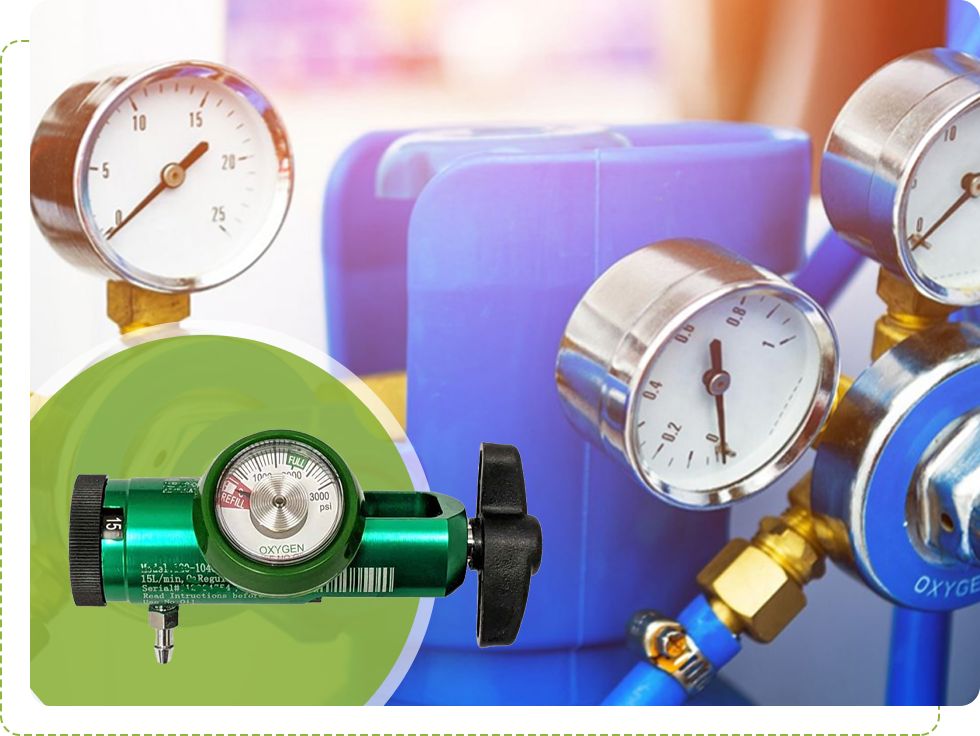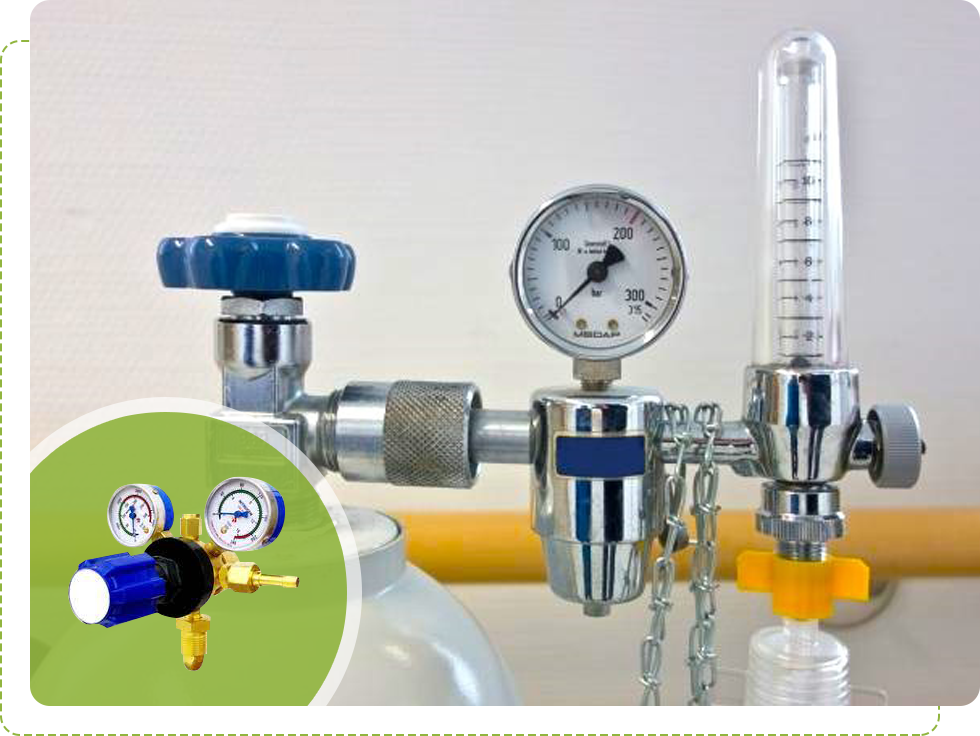A gas cylinder is a pressure vessel for the storage and containment of gases at above atmospheric pressure. High-pressure gas cylinders are also called bottles. Inside the cylinder, the stored contents may be in a state of compressed gas, vapor over liquid, supercritical fluid, or dissolved in a substrate material, depending on the physical characteristics of the contents. A typical gas cylinder design is elongated, standing upright on a flattened bottom end, with the valve and fitting at the top for connecting to the receiving apparatus.
Choosing the right regulator for your application is critical – and often challenging.
Ghani Chemical understands the importance of using the appropriate equipment for each gas.




